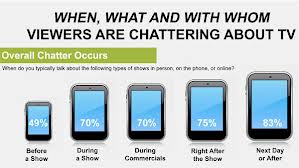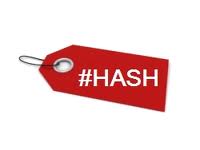I have a confession to make…I’ve become a bit of a Twitter junkie. If you had asked me eighteen months ago why Twitter is such a popular tool I would have shrugged by shoulders in bewilderment. At the time, I too was puzzled as to why so many people were using this channel to read “tweets” about what people were doing all day. I thought aren’t people already using Facebook for that?
As a social media professional I kept circling back to how we could leverage Twitter as a strategic channel for engagement and marketing . I often struggled with how I could use this channel for recruitment. Earlier this year I attended a Brainstorm conference which had one day dedicated to how to use social media for campus recruitment. Although I am not a campus recruiter, I did know that Twitter was an important channel for students and new graduates. Chelsea Newton and Michael Mahoney from Talent Formula delivered an amazing workshop reviewing all the relevant social media channels. One comment that really resonated with me, one powerful statement that I still think about today is this; “…If you are looking to put together a social media strategy, you have to be on the channels to understand how they work.” It sounds so obvious, but it was really profound. Right then and there I logged into my dormant Twitter account and started tweeting to Michael, Chelsea and the group about what I had learned and observed. It was enlightening, powerful and liberating. People were actually responding and re-tweeeting me!
. I often struggled with how I could use this channel for recruitment. Earlier this year I attended a Brainstorm conference which had one day dedicated to how to use social media for campus recruitment. Although I am not a campus recruiter, I did know that Twitter was an important channel for students and new graduates. Chelsea Newton and Michael Mahoney from Talent Formula delivered an amazing workshop reviewing all the relevant social media channels. One comment that really resonated with me, one powerful statement that I still think about today is this; “…If you are looking to put together a social media strategy, you have to be on the channels to understand how they work.” It sounds so obvious, but it was really profound. Right then and there I logged into my dormant Twitter account and started tweeting to Michael, Chelsea and the group about what I had learned and observed. It was enlightening, powerful and liberating. People were actually responding and re-tweeeting me!
A few weeks ago, I was reading an article in Canadian Business magazine (yes an actual magazine) talking about how Twitter has changed the way we watch TV. The article stated that 70% of TV viewers now watch shows with a smart phone/tablet in hand; using them a second screen in  TV viewing. So, I have another confession to make…I too have adopted this practice. On Sunday nights I arm myself with my iPad and tune into to watch one of my favourite shows, The Walking Dead. Through a simple #hashtag thousands of us around the globe tweet our comments, reactions, predictions, etc. before, after and during the show. Many of the actors also tweet their own commentary encouraging further conversation. TV shows such as the Talking Dead take questions from Facebook and Twitter as discussion items for the show. It allows for much broader participation and engagement. The ability to interact with people in a shared conversation through Twitter has changed the way I watch certain shows.
TV viewing. So, I have another confession to make…I too have adopted this practice. On Sunday nights I arm myself with my iPad and tune into to watch one of my favourite shows, The Walking Dead. Through a simple #hashtag thousands of us around the globe tweet our comments, reactions, predictions, etc. before, after and during the show. Many of the actors also tweet their own commentary encouraging further conversation. TV shows such as the Talking Dead take questions from Facebook and Twitter as discussion items for the show. It allows for much broader participation and engagement. The ability to interact with people in a shared conversation through Twitter has changed the way I watch certain shows.
As I use Twitter more and more, I realize why it is so popular and impactful:
1) Quick updates– You can share a thought, observation, picture or comment on the fly. It’s easy to do.

2) Expands Sharing- The integration of Twitter on other social media platforms and websites allow you to share pictures, articles, webpages, comments, updates, etc. to your followers that is easy to consume. Re-tweets are also fast and networking friendly.
3) You can participate in conversations– You may say, can’t we do this on Facebook? I’ll answer it one word. #Hastag. This humble, yet revolutionary invention allows people to come together and participate in  conversations. At the last conference I attended, conversations and observations were shared collectively through a hashtag. Even if you couldn’t participate in person, you could still be part of the conversation and contribute your ideas, thoughts and feedback.
conversations. At the last conference I attended, conversations and observations were shared collectively through a hashtag. Even if you couldn’t participate in person, you could still be part of the conversation and contribute your ideas, thoughts and feedback.
4) You can follow people without being intrusive– Twitter has limited profile information. The idea is to converse. Most people feel comfortable “following” other people they don’t’ really know, but want to get to know. It’s the perfect bridge between Facebook and LinkedIn.

5) You can have a single opinion or a unified voice- Twitter is a great way to rally people around a single cause. Good or bad. Product
launches can generate oodles of hype and amplify brand. In the case of JP Morgan, it can also provide a unified voice for disgruntled people sharing feedback and comments about the company.
So a few weeks after my Sunday TV + Twitter ritual, I circled back to the initial question; how can recruitment use Twitter in a more meaningful way? It’s no surprise the primary strategy is still based on a job board approach. While this may be low hanging fruit, it’s still missing the essence of what Twitter really represents; engagement. A few months ago I wrote a blog post about Bilal Jaffery who got a job at Enterasys through a tweet back to the CEO. The lesson is social media is more powerful if you take the time to converse. It means investing in creating a pipeline of people you would like to have a further conversation with. So how do you do that?
1) Build up your follower base- As you start to follow other companies, you may notice people who are of interest. Start to follow them. Get to know them.

2) Participate in conversations- I can’t stress this enough. To make yourself visible you have to participate in conversations. So add your two cents!
3) Be responsive- Conversations are two way. If you are tweeting you should also re-tweet and respond to tweets.
4) Direct Message People of Interest- When you see someone you want to talk to direct message them.
5) Don’t Spam- Don’t tweet just for the sake of tweeting. It’s better to a have a few quality tweets (including jobs) instead of hundreds that clog up peoples tweeter feed. You will be “unfollowed” pretty quickly and it could damage your reputation.
Twitter is a viable contender in the recruitment space. Many companies who have followed the steps above have touted success through product sales, brand, recognition and hires through its usage. McDonald’s, AT&T, Cogent Company and Enterasys are few examples of this.
I hope these few tips will help you start thinking about how you can use Twitter for recruitment. I would love to hear from you so please tweet me @annzaliebarrett

Happy Tweeting!








